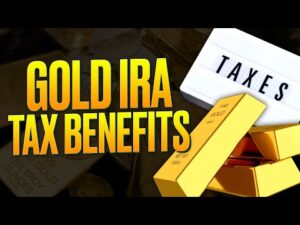
Tokenized RWAs: A More Versatile Choice
According to Zaid Ismail, the COO at Mintlayer, tokenized real-world assets (RWAs) offer significant advantages over traditional exchange-traded funds (ETFs). Unlike regular ETFs, tokenized RWAs allow for 24/7 trading, bypassing the limitations of traditional exchange hours. In addition, tokenized RWAs provide improved liquidity, global accessibility, and real-time transactions. These digital tokens, based on blockchain technology, also offer increased transparency and reduced costs. With these attributes, tokenized RWAs are a more versatile and appealing choice for modern investors looking to diversify their portfolios.
The Future of Tokenized RWAs
While tokenized RWAs appear to be superior to ETFs, their future success relies on global regulatory collaboration and the standardization of rules governing these assets. The involvement of traditional financial institutions in embracing this new approach is also crucial. Ismail believes that the willingness of traditional players to adopt tokenized RWAs and work with regulators to adapt existing regulations will contribute to the success of this innovative way of handling valuable assets.
Cross-Border Trading and Ownership of RWAs
The cross-border trading and ownership of tokenized RWAs have become more feasible in recent years. However, to ensure smooth transactions, international cooperation and standardization of regulatory frameworks are necessary. Traditional financial institutions are beginning to explore tokenized RWAs, testing the waters of this new digital approach. As they do so, collaboration with regulators to adapt existing regulations will be essential for the future of cross-border trading and ownership of tokenized RWAs.
The Benefits of Tokenization
Although the initial tokenization process may seem complex to asset owners, platforms like Mintlayer simplify the process, reducing hassles. Mintlayer's technology allows non-technical users to issue tokens easily without the need for complex deployer contracts. Tokenization offers enhanced liquidity, fractional ownership of high-value assets, global market access, transparent transactions, and efficient asset management through smart contracts. Tokenized assets also provide stable investment opportunities, especially in high-inflation regions. Overall, tokenization revolutionizes asset origination and trading.
Blockchain Infrastructure and Tokenization
The current state of blockchain infrastructure, particularly layer 1 solutions, faces challenges such as congestion, high transaction fees, and difficulties in running nodes. However, the advent of layer 2 solutions, like Mintlayer, is changing the landscape and making blockchain ready for the tokenization of real-world assets at scale. Layer 2 solutions address congestion and transaction fee issues by offloading operations from the main chain. Mintlayer's UTXO infrastructure allows for transaction batching, saving space and lowering fees. Additionally, Mintlayer's HTLC smart contract enables atomic swaps and lightning network integration, enhancing scalability and throughput. With these advancements, blockchain infrastructure, combined with layer 2 solutions, is ready to support large-scale asset tokenization.
Bringing Defi to Bitcoin
While Ethereum has revolutionized the defi space, Bitcoin remains the leading cryptocurrency with the largest user base and market share. Building defi applications within the Bitcoin ecosystem taps into this vast market, potentially leading to higher adoption rates and greater network effects. The decentralized nature of the Bitcoin network offers security and trust, reducing the risks of censorship and single points of failure. Moreover, developers can leverage Bitcoin's substantial liquidity pool for defi applications requiring significant capital inflows. With its security, user base, and innovative technologies, the Bitcoin ecosystem, supported by layer 2 solutions like Mintlayer, is an appealing platform for creating state-of-the-art defi applications.
What are your thoughts on tokenized real-world assets and their advantages over traditional ETFs? Share your opinions in the comments section below.
Frequently Asked Questions
How much money should my Roth IRA be funded?
Roth IRAs are retirement accounts where you deposit your own money tax-free. You cannot withdraw funds from these accounts until you reach 59 1/2. However, if your goal is to withdraw funds before that time, there are certain rules you must observe. First, your principal (the original deposit amount) cannot be touched. You cannot withdraw more than the original amount you contributed. You must pay taxes on the difference if you want to take out more than what you initially contributed.
The second rule is that you cannot withdraw your earnings without paying income taxes. You will pay income taxes when you withdraw your earnings. Consider, for instance, that you contribute $5,000 per year to your Roth IRA. Let's also say that you earn $10,000 per annum after contributing. You would owe $3,500 in federal income taxes on the earnings. You would have $6,500 less. Because you can only withdraw what you have initially contributed, this is all you can take out.
Therefore, even if you take $4,000 out of your earnings you still owe taxes on $1,500. Additionally, half of your earnings would be lost because they will be taxed at 50% (half the 40%). So even though you received $7,000 in Roth IRA contributions, you only received $4,000.
There are two types of Roth IRAs: Traditional and Roth. A traditional IRA allows for you to deduct pretax contributions of your taxable income. When you retire, you can use your traditional IRA to withdraw your contribution balance plus interest. There are no restrictions on the amount you can withdraw from a Traditional IRA.
Roth IRAs don't allow you deduct contributions. But once you've retired, you can withdraw the entire contribution amount plus any accrued interest. Unlike a traditional IRA, there is no minimum withdrawal requirement. Your contribution can be withdrawn at any age, not just when you reach 70 1/2.
What are the pros and disadvantages of a gold IRA
An Individual Retirement Account (IRA), unlike regular savings accounts, doesn't require you to pay tax on interest earned. An IRA is a great option for those who want to save money, but don't want tax on any interest earned. There are some disadvantages to this investment.
For example, if you withdraw too much from your IRA once, you could lose all your accumulated funds. The IRS may prevent you from taking out your IRA funds until you reach 59 1/2. You will likely have to pay a penalty fee if you withdraw funds from an IRA.
The downside is that managing your IRA requires fees. Many banks charge between 0.5% and 2.0% per year. Other providers may charge monthly management fees, ranging between $10 and $50.
Insurance will be required if you would like to keep your cash out of banks. Insurance companies will usually require that you have at least $500,000. Some insurers may require you to have insurance that covers losses up $500,000.
If you are considering a Gold IRA, you need to first decide how much of it you would like to use. Some providers limit the amount of gold that you are allowed to own. Some providers allow you to choose your weight.
It's also important to decide whether or not to buy gold futures contracts. Gold futures contracts are more expensive than physical gold. However, futures contracts give you flexibility when buying gold. They enable you to establish a contract with an expiration date.
Also, you will need to decide on the type of insurance coverage you would like. The standard policy does NOT include theft protection and loss due to fire or flood. However, it does cover damage caused by natural disasters. You may consider adding additional coverage if you live in an area at high risk.
You should also consider the cost of storage for your gold. Storage costs are not covered by insurance. Additionally, safekeeping is usually charged by banks at around $25-$40 per monthly.
To open a IRA in gold, you will need to first speak with a qualified custodian. A custodian helps you keep track of your investments, and ensures compliance with federal regulations. Custodians cannot sell your assets. Instead, they must keep your assets for as long you request.
Once you've decided which type of IRA best suits your needs, you'll need to fill out paperwork specifying your goals. Your plan should include information about the investments you want to make, such as stocks, bonds, mutual funds, or real estate. The plan should also include information about how much you are willing to invest each month.
After filling out the forms, you'll need to send them to your chosen provider along with a check for a small deposit. After receiving your application, the company will review it and mail you a confirmation letter.
If you are thinking of opening a gold IRA for retirement, a financial professional is a great idea. Financial planners are experts at investing and can help you determine which type of IRA is best for you. They can help you find cheaper insurance options to lower your costs.
Who holds the gold in a gold IRA?
The IRS considers anyone who owns gold to be “a form money” and therefore subject to taxation.
This tax-free status is only available to those who have owned at least $10,000 of gold and have kept it for at minimum five years.
While gold may be a great investment to help prevent inflation and volatility in the market, it's not wise to keep it if you won't use it.
If you plan to eventually sell the gold, you'll need a report on its value. This could impact the amount of capital gains taxes your owe if you cash in your investments.
You should consult a financial planner or accountant to see what options are available to you.
Statistics
- If you take distributions before hitting 59.5, you'll owe a 10% penalty on the amount withdrawn. (lendedu.com)
- (Basically, if your GDP grows by 2%, you need miners to dig 2% more gold out of the ground every year to keep prices steady.) (smartasset.com)
- If you accidentally make an improper transaction, the IRS will disallow it and count it as a withdrawal, so you would owe income tax on the item's value and, if you are younger than 59 ½, an additional 10% early withdrawal penalty. (forbes.com)
- Instead, the economy improved, stocks rebounded, and gold plunged, losing 28 percent of its value in 2013. (aarp.org)
- The price of gold jumped 131 percent from late 2007 to September 2011, when it hit a high of $1,921 an ounce, according to the World Gold Council. (aarp.org)
External Links
forbes.com
- Gold IRA, Add Sparkle to Your Retirement Nest egg
- Understanding China's Evergrande Crisis – Forbes Advisor
investopedia.com
wsj.com
- Saddam Hussein's InvasionHelped Uncage a Bear In 1991 – WSJ
- How do you keep your IRA Gold at Home? It's Not Exactly Lawful – WSJ
finance.yahoo.com
How To
3 Ways to Invest in Gold for Retirement
It's essential to understand how gold fits into your retirement plan. You can invest in gold through your 401(k), if you have one at work. It is also possible to invest in gold from outside of your work environment. One example is opening a custodial accounts at Fidelity Investments if an IRA (Individual Retirement Account), if you already own one. Or, if you don't already own any precious metals, you may want to consider buying them directly from a reputable dealer.
These are three easy rules to remember if you invest in gold.
- Buy Gold with Your Cash – Don't use credit cards or borrow money to fund your investments. Instead, cash in your accounts. This will help protect you against inflation and keep your purchasing power high.
- Physical Gold Coins: You should own physical gold coins, not just a certificate. The reason is that it's much easier to sell physical gold coins than certificates. There are no storage fees for physical gold coins.
- Diversify Your Portfolio. – Do not put all your eggs into one basket. By investing in multiple assets, you can spread your wealth. This helps to reduce risk and provides more flexibility when markets are volatile.
—————————————————————————————————————————————————————————————-
By: Terence Zimwara
Title: Tokenized Real-World Assets (RWAs) Outperform Traditional ETFs, Says Mintlayer COO
Sourced From: news.bitcoin.com/tokenized-real-world-assets-an-appealing-portfolio-diversification-strategy-for-modern-investors-zaid-ismail/
Published Date: Mon, 15 Jan 2024 12:30:29 +0000














